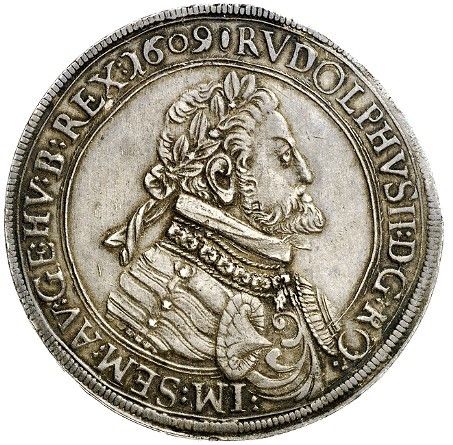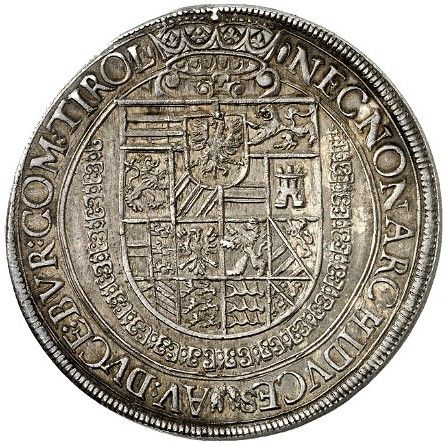Austrian Empire 1 Thaler - Rudolph II (Hall)
Introduction
The Austrian Empire 1 Thaler coin, minted in 1609 during the reign of Rudolph II, stands as a testament to the artistic and historical significance of numismatics. This silver coin showcases intricate designs and reflects the rich history of the era.
Historical Background
Issued by the Austrian Empire, this 1 Thaler coin was minted in Hall in 1609. Rudolph II, a notable ruler known for his patronage of arts and sciences, reigned during a period of great cultural flourishing in Central Europe. The coinage of this era reflects the opulence and artistic achievements of the time.
Coin Images
 Obverse
Obverse
 Reverse
Reverse
Design Features
The obverse of the coin features a bust in ornamented armor on the right, with a laureate head and a ribbon floating under the hair. Enclosed within a beaded circle, the front of the bust intersects the legend, with the date positioned at the top within the legend. The reverse side showcases a typical Hall design with a large 16-sector coat of arms, adorned with a Tyrolean eagle on top. The Golden Fleece lamb divides the legend at the bottom, with intricate Arabesques embellishing the space between the coat of arms and crown.
Technical Specifications
- Denomination: 1 Thaler
- Composition: Silver (.9375)
- Weight: 29.00g
- Diameter: 42.00mm
- Issuing Year: 1609
Collectible Value
The Austrian Empire 1 Thaler coin from 1609 holds significant collectible value in numismatic circles. Its historical importance, coupled with the intricate design elements, make it a prized addition to any collection. Due to its limited mintage and historical significance, this coin is highly sought after by collectors. The market value of this coin reflects its rarity and desirability among numismatists.
Conclusion
In conclusion, the Austrian Empire 1 Thaler Rudolph II coin is a true gem in the world of numismatics. Its exquisite design, historical significance, and collectible value make it a coveted piece for collectors and enthusiasts alike. Owning this coin not only provides a glimpse into the past but also allows one to appreciate the artistry and craftsmanship of a bygone era.

